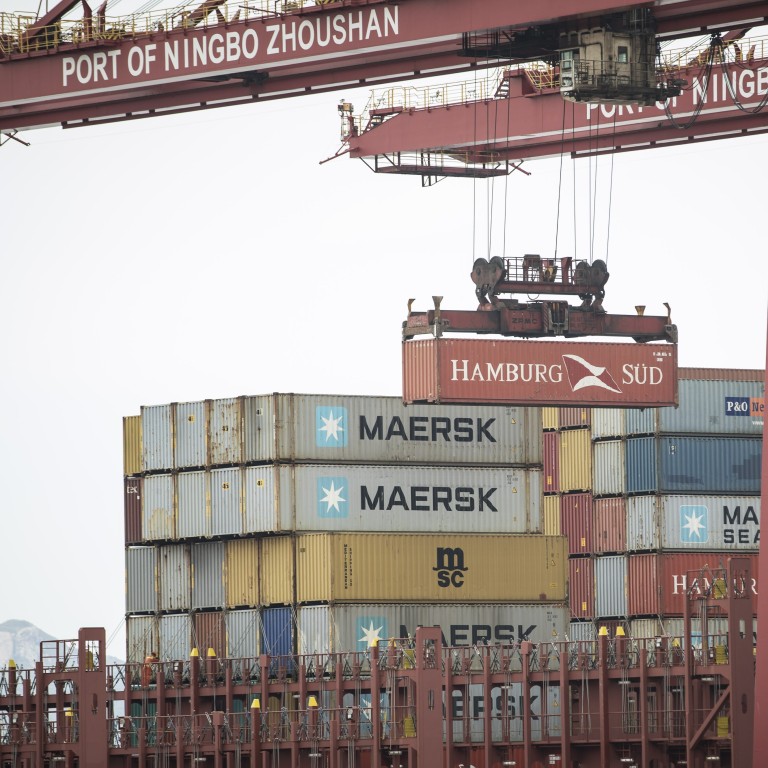
China’s busiest container-shipping ports in Shanghai, Ningbo begin to reopen after Typhoon Chanthu
- Both ports started handling laden containers on Tuesday after a brief shutdown, but analysts warn that even mild disruptions weigh heavy on the global supply chain
- Before the storm, Ningbo’s busy Meishan terminal had resumed operations for just 18 days following a two-week lockdown due to a single coronavirus infection
Terminals at two of the world’s busiest container ports began resuming operations on Tuesday after briefly shutting down due to Typhoon Chanthu, but analysts warn that delays and disruptions remain a broader concern in the global supply chain.
Flights and rail services in Shanghai also gradually started returning to normal on Tuesday, local authorities said.
Both Shanghai Port and Ningbo-Zhoushan Port are now handling laden containers at several terminals, according to official statements.
Chanthu, with wind speeds still surpassing 100km/h on Tuesday evening, was downgraded from a strong typhoon to a typhoon in the morning, and it was expected to linger off China’s east coast until Thursday before continuing northeast out to sea, according to China’s National Meteorological Centre. Heavy rain and strong winds were forecast to continue in the meantime.
But despite the relatively quick resumptions in service at the crucial shipping ports, industry insiders expect further delays in the lead-up to the busy holiday season, with global shipping demand booming.
“Any shutdown due to weather, even a temporary one, could further slow supply chains, which are already stretched thin as exporters attempt to ship more ahead of the holiday season,” said Nick Austin, director of weather analytics and senior meteorologist at FreightWaves, a freight intelligence provider.
There were a total of 86 container ships at anchor off Shanghai and Ningbo as of Friday, before the closures began on Sunday, according to data from Lloyd’s List, which provides information on global shipping markets.
TIBA China, a supply-chain logistics provider, also said the brief shutdown will have far-reaching implications.
“The halts are likely to further delay shipments and damage global supply chains, which are already struggling to deal with record exports from China, the effects of local Covid-19 outbreaks, and the pre-Golden Week peak season,” TIBA China said. The National Day Golden Week begins on October 1.
Indeed, while port closures from typhoons are common, the implications on the global supply chain are now amplified due to the pandemic, as ports around the world are facing massive traffic volume and lower operating efficiency due to both infections among port workers and strict control measures that have caused serious backlogs and congestion.
These problems are amplified at both Shanghai Port, the world’s largest container port, and Ningbo-Zhoushan Port, the world’s largest port by cargo throughput, given their size and significance in the industry.
According to an analysis from Russell Group, a risk-modelling company, exports of clothing and office equipment are among the goods most affected by the temporary closures at the two ports.
Ningbo has been closed twice, and the first incident created havoc in global trade logistics. I would not be a surprised if it happens again
“Rising port-accumulation exposures across the global economy are a serious concern for businesses that rely on just-in-time supply-chain methods,” said Suki Basi, CEO of Russell Group.
“In this quarter alone, Ningbo has been closed twice, and the first incident created havoc in global trade logistics. I would not be surprised if it happens again.”
While Fujian is home to numerous ports, including Xiamen, none of these have been locked down since coronavirus cases started to rise in the southern province earlier this week.

